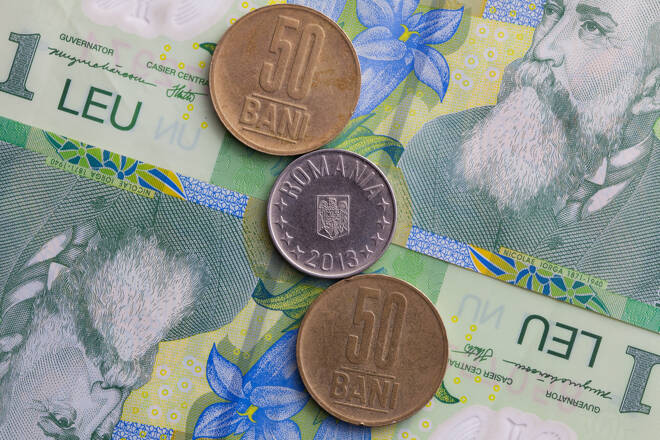Advertisement
Advertisement
Romania: Credit-Rating Outlook Hinges on Fiscal Prudence, Deploying EU Funds Amid Slow Growth, High Inflation
By:
Romania’s government risks missing near-term fiscal targets given the increasingly challenging mix of rapidly slowing growth and rising inflation, made worse by the war in Ukraine.
The war in Ukraine is having a profound impact on Romania (rated BBB-/Stable), pushing up inflation and raising risks to economic growth as well as health of public and external finances, already strained by last year’s energy crisis.
Growth will slow to 2-2.5% in 2022 from 5.9% in 2021 under our baseline scenario, representing a 2.5-3 percentage point downward revision from our forecast in December. Inflation will average a near-double digit 9% this year on higher prices for fuel and agricultural commodities, exacerbated by the Russia-Ukraine conflict. Higher commodity prices are also contributing to a widened current account deficit, projected at 8% of GDP this year, up from 7% in 2021.
The slowdown in growth represents a challenge for budget consolidation plans
The slowdown in growth represents a challenge to government plans for a budget deficit of 6.2% of GDP in 2022 and a reduction of the deficit to below 3% of GDP by 2024. This budgetary plan was based on a more optimistic (pre-war) government expectation of GDP growth of 4.6% for this year. We instead project a deficit of 7.5% of GDP for 2022 given the less favourable economic context.
The government is preparing fiscal support for households and business worth more than RON 17bn – or EUR 3.5bn, equivalent to 1.5% of GDP – in face of surging energy prices. Around RON 8bn will come from the state budget, with the rest set to be drawn from EU funds.
Figure 1. Romania’s budget deficit to remain above 3% of GDP through 2024
General government deficit, % of GDP (EDP = the EU’s Excessive Deficit Procedure)
In addition to expected budgetary modifications to capture the worsening economic environment, fiscal consolidation will likely be delayed until 2023, with the budget deficit unlikely to fall below 3% of GDP before 2025 (Figure 1). Romania recorded an estimated deficit of 7.5% of GDP last year, under an 8% target.
Absent significant fiscal reforms, stability of the medium-run fiscal outlook remains suspect
Without significant fiscal reform to address rising pension costs, the stability of the medium-run fiscal outlook remains overly contingent upon high economic growth as well as on tight control of spending. However, the country’s record of unstable governments and frequent changes in cabinets has tended to result in expansionary fiscal policy. The new coalition government has, nonetheless, been stable since November 2021 despite differing internal views on judicial reform and fiscal policy.
For now, disbursement of EU funding under the Recovery and Resilience Facility (RRF), which requires no co-financing, is partly compensating for budgetary deterioration. Romania received around EUR 1.9bn in loans under the RRF in January, in addition to EUR 1.85bn of pre-financing in grants in December 2021. In 2022, Romania plans to receive EUR 6bn in RRF monies, equivalent to around 2.5% of GDP, subject to progress on the planned reforms, including a review of the tax framework and improving energy efficiency in the economy.
In addition, there will be first provisions from EUR 17bn in EU funding compensating member states for housing and social services offered to refugees from the Ukraine war, with such costs for Romania potentially reaching above EUR 2bn in this year.
However, the coalition government faces a difficult task of passing and implementing pension reforms by 2023 and increasing tax revenue by at least 2.5% of GDP by 2025. At 26% of GDP in 2020, Romania’s tax revenues were the EU’s second lowest after Ireland’s. Meeting these objectives is important to guaranteeing a steady inflow of RRF cash, of EUR 29.2bn (12% of 2021 GDP) over 2021-2026, in addition to EU structural funds of around EUR 50bn (21% of 2021 GDP) for the period 2021-2027.
Absent alleviation of fiscal pressure, Romania’s investment-grade credit ratings would come under pressure
The stable inflow of EU funding and the associated reform programme are important credit rating drivers for Romania. Improving institutional capacity for effective fund use would increase medium-run growth above the current potential rate estimated at 4% annually and help rebuild fiscal buffers. Romania had absorbed only 55% of structural funds under the former 2014-20 EU budget as of end-2021, among the lowest for EU member states of central and eastern Europe.
The credibility of state fiscal consolidation and reform plans underpin Romania’s credit ratings. A protracted deterioration of public finances or stalled reforms, with no alleviation of longer-term pressure on the budget from rising pension costs, would present greater risk to Romania’s investment-grade credit ratings.
For a look at all of today’s economic events, check out our economic calendar.
Levon Kameryan is Senior Analyst in Sovereign and Public Sector ratings at Scope Ratings GmbH.
About the Author
Levon Kameryancontributor
Levon graduated with a M.Sc. in International Economics and Public Policy from the University of Mainz in 2016. Levon worked previously as an economist at the Central Bank of Armenia.
Advertisement
